Nymphs: The Mythical Spirits of Nature
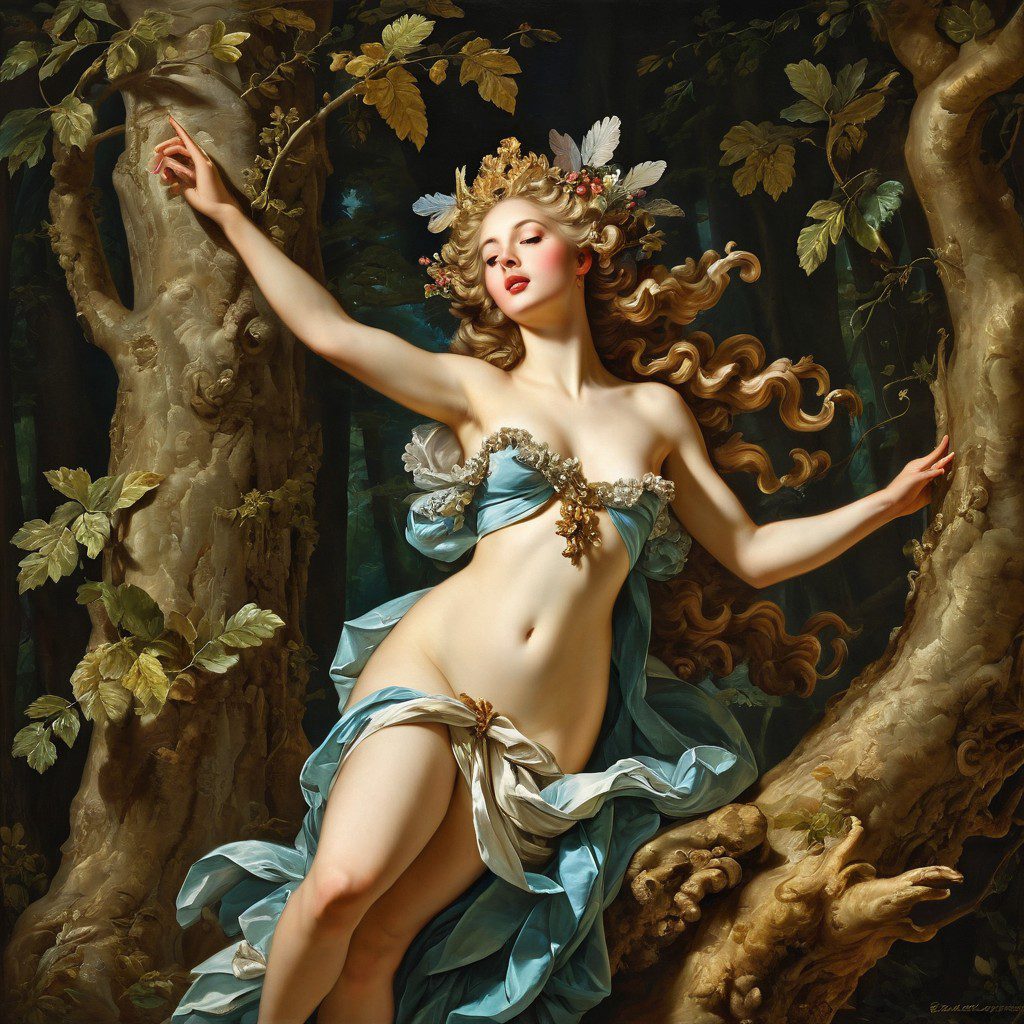
Nymphs, with their ethereal beauty and intimate connection to nature, have enchanted the imaginations of poets, artists, and storytellers for millennia. As the embodiments of natural elements—rivers, trees, mountains, and the sea—nymphs exist in nearly every corner of ancient Greek mythology and have since become an enduring symbol of the mysterious, powerful forces of nature.
In this blog, we’ll dive deep into the history and mythology of nymphs, explore their various types and roles in classical myth, and examine how they have evolved in modern art, literature, and pop culture. Whether portrayed as benevolent guardians of the wild or elusive objects of desire, nymphs remain a captivating and essential part of mythological tradition.
The Origins of Nymphs in Greek Mythology
In ancient Greek mythology, nymphs are minor female deities associated with the natural world. They are not immortal like the Olympian gods, but they live incredibly long lives and are usually bound to specific places or features in nature. While most nymphs are benevolent, they can also be capricious, with some myths portraying them as dangerous to mortals who dare to disturb their domains.
Nymphs are not a single, uniform group; instead, they are classified according to the part of nature they inhabit. This close association with natural features made nymphs the personifications of rivers, trees, mountains, and even specific springs or forests. They are described as beautiful and youthful maidens, whose free-spirited nature and deep connection to the earth link them with fertility, growth, and the life-giving elements of the world.
Types of Nymphs
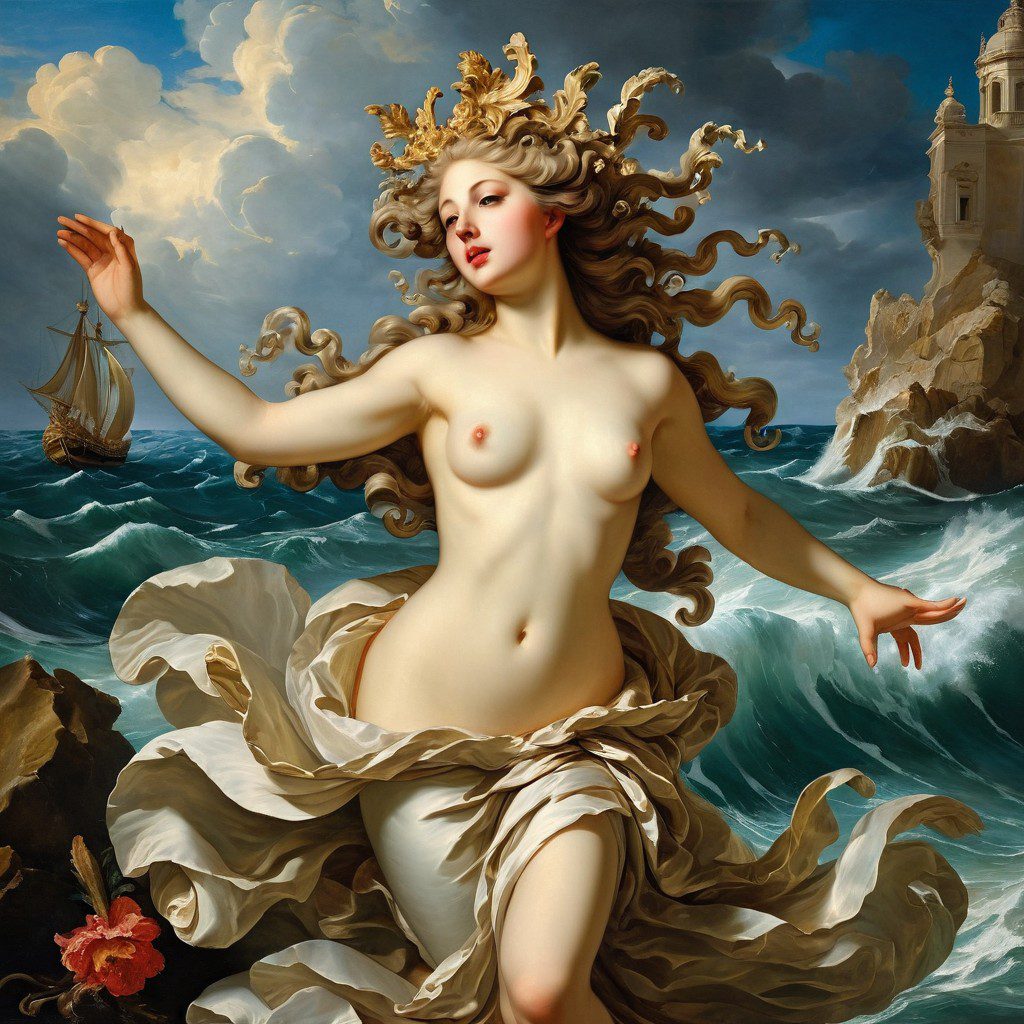
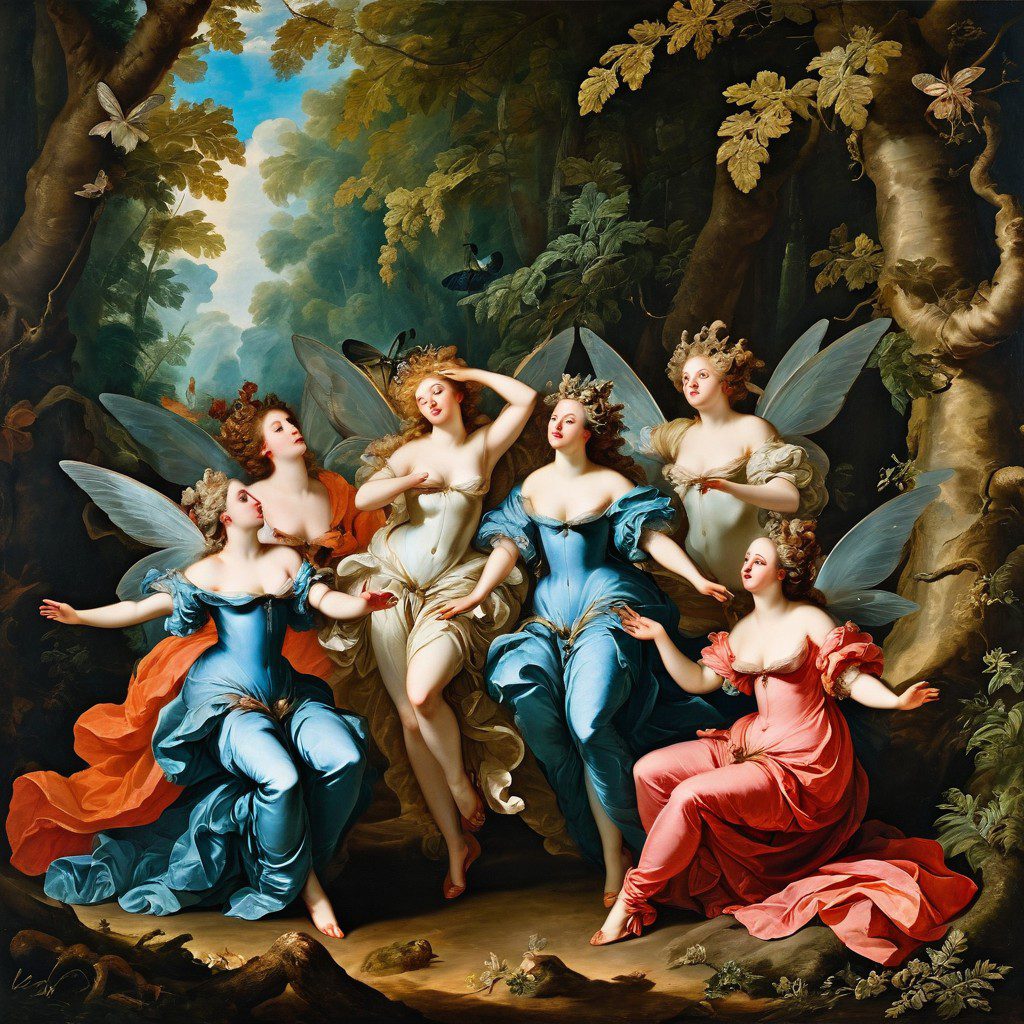
Nymphs are divided into several categories, each tied to a specific part of the natural world. Some of the most prominent types of nymphs in Greek mythology include:
1. Naiads: Nymphs of Fresh Water
The Naiads are water nymphs who preside over rivers, springs, lakes, fountains, and streams. Because water is so essential to life, Naiads are often associated with fertility and nourishment. They were believed to inhabit and guard the waters that sustained the cities and villages of ancient Greece. Some Naiads were seen as protectors, while others were more dangerous, capable of luring mortals into the water.
In mythology, Naiads often appear in stories of love and transformation. One famous tale is the myth of Hylas, a companion of the hero Heracles. Hylas, while fetching water, was abducted by Naiads who fell in love with his beauty, causing Heracles to search for him in vain. This story highlights both the allure and the mystery surrounding these water spirits.
2. Dryads and Hamadryads: Nymphs of Trees and Forests
The Dryads are the nymphs of trees, particularly oaks, while Hamadryads are bound to a specific tree. Hamadryads are so closely tied to their tree that if it dies, they perish with it. This deep connection between the nymph and the tree reflects the ancient belief in the sacredness of nature and the interconnectedness of all living things.
Dryads often appear in Greek myths as protectors of the forests, and their well-being is tied to the health of the trees. In some stories, they punish mortals who harm the trees or the land. For example, in the myth of Erysichthon, a king who cut down sacred trees in a grove dedicated to Demeter, the goddess of the harvest punished him with insatiable hunger that eventually led to his destruction.
3. Oreads: Nymphs of Mountains and Groves
The Oreads are mountain nymphs, often associated with rocky landscapes, hills, and grottoes. As spirits of the highlands, Oreads are wild and untamed, embodying the raw power of nature. They are often depicted as accompanying the goddess Artemis, who roams the mountains as a huntress. One of the most famous Oreads is Echo, whose unrequited love for Narcissus led to her fading away until only her voice remained, repeating the words of others.
4. Oceanids: Nymphs of the Sea
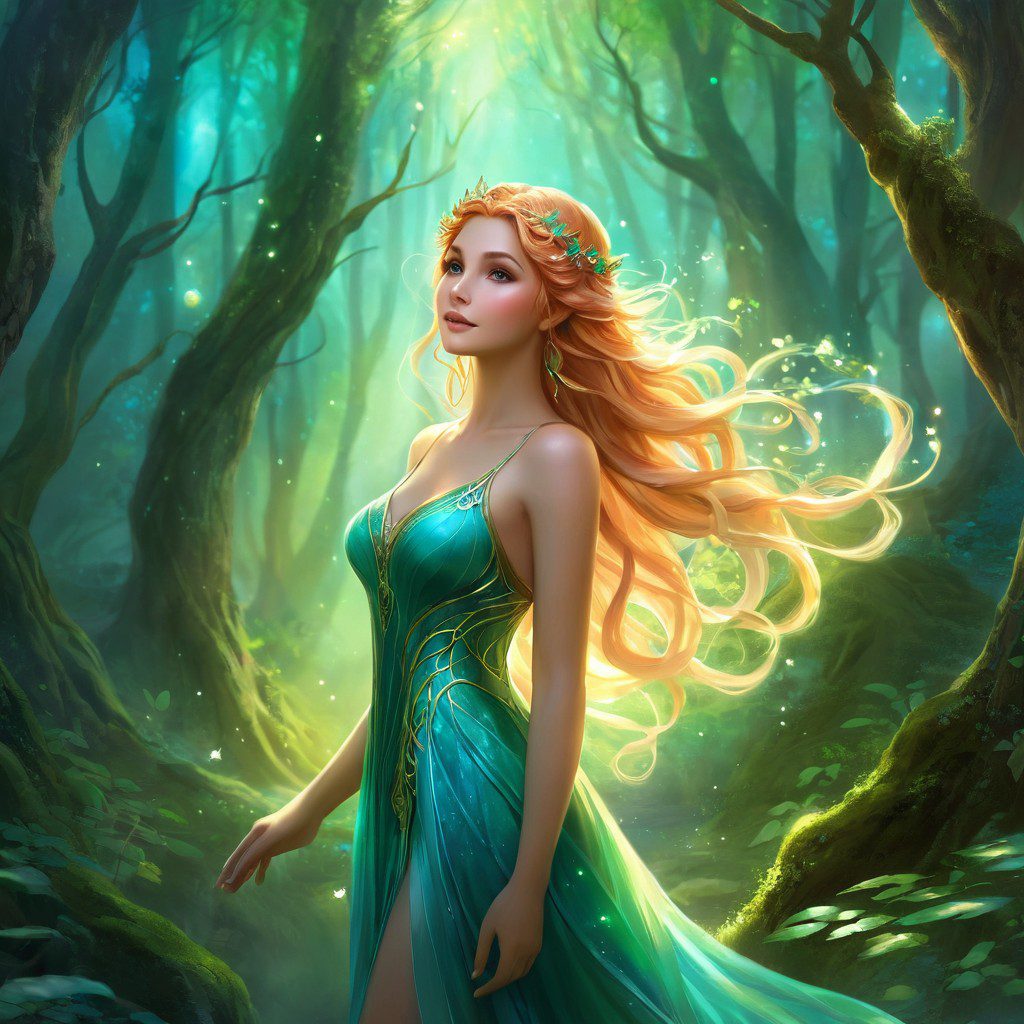
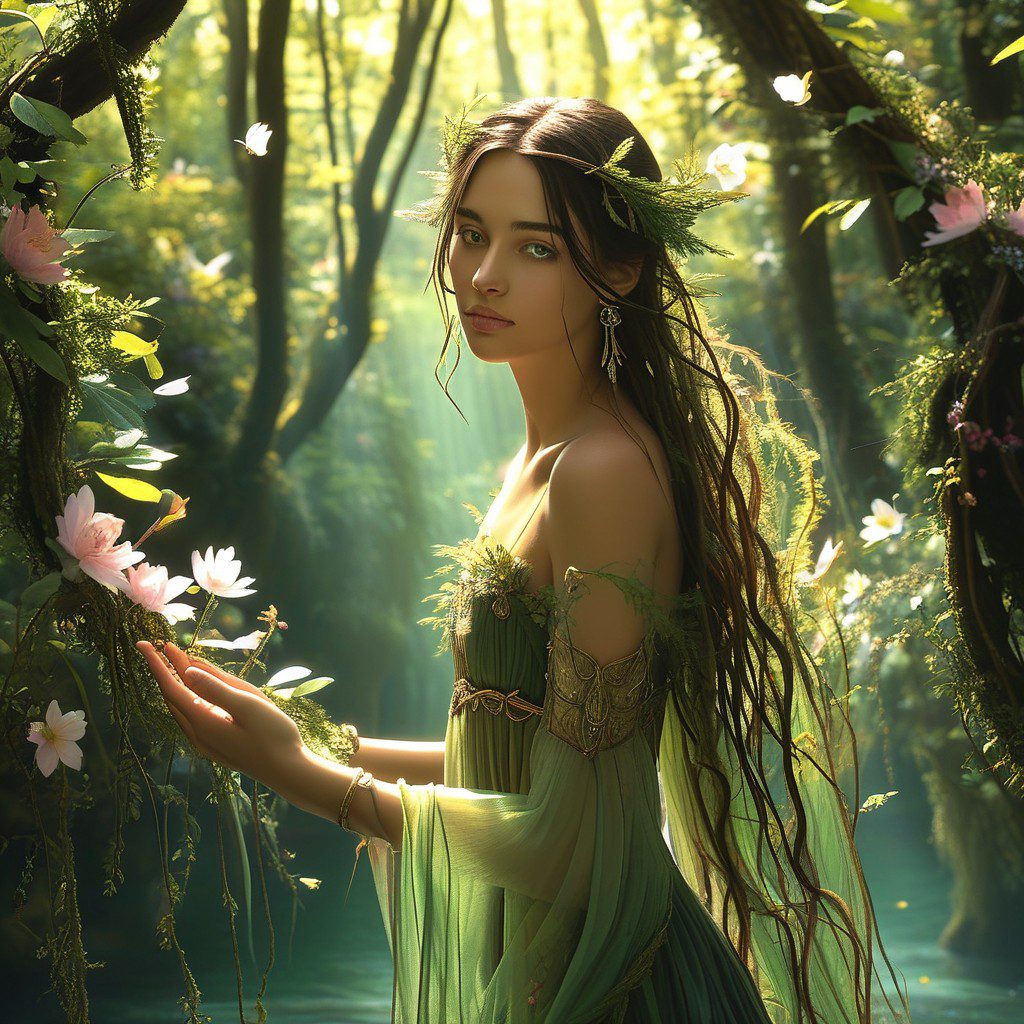
The Oceanids are sea nymphs, daughters of the Titan Oceanus and the goddess Tethys. They are often associated with the oceans, though they can also represent large bodies of freshwater. In some myths, Oceanids act as companions to gods and heroes. For example, Calypso, the nymph who held Odysseus captive on her island for several years, is often considered an Oceanid.
5. Nereids: Nymphs of the Sea
The Nereids are another group of sea nymphs, specifically the fifty daughters of the sea god Nereus and the Oceanid Doris. The Nereids are depicted as beautiful maidens who dwell in the depths of the Mediterranean Sea, often riding on the backs of dolphins or other sea creatures. They are associated with the calmness and beauty of the sea, but they are also known to help sailors in distress. The most famous of the Nereids is Thetis, mother of the Greek hero Achilles, who played a crucial role in the events of the Trojan War.
Nymphs in Mythology: Guardians, Lovers, and Objects of Desire
Nymphs are woven into many of the foundational myths of ancient Greece. Their beauty and charm often make them the objects of desire for both gods and mortals, and their stories frequently revolve around love, transformation, and the consequences of crossing boundaries.
The Story of Daphne and Apollo
One of the most famous myths involving a nymph is the story of Daphne, a Naiad pursued by the god Apollo. Apollo fell deeply in love with Daphne after being struck by one of Eros’s arrows. However, Daphne did not return Apollo’s affections and fled from him. As he chased her, Daphne prayed to her father, the river god Peneus, for help. In response, she was transformed into a laurel tree, and Apollo, heartbroken, declared the laurel to be his sacred tree, thus giving the plant a place of honor in his worship.
The myth of Daphne and Apollo illustrates the nymph’s close relationship with nature and the theme of transformation—a common motif in Greek myths. Nymphs, though often depicted as vulnerable, have a deep connection to the forces of the earth and can merge with nature when threatened.
Echo and Narcissus
Another famous nymph in Greek mythology is Echo, an Oread known for her voice. Echo was cursed by the goddess Hera to only repeat the words of others after she distracted Hera while Zeus was pursuing other women. Heartbroken and unable to express her feelings, Echo fell in love with Narcissus, a beautiful youth who was so captivated by his own reflection that he rejected her. Echo’s unrequited love for Narcissus caused her to fade away, leaving only her voice behind.
This tragic myth of love and loss highlights the vulnerability of nymphs, who, despite their supernatural origins, often suffer at the hands of gods and mortals.
The Abduction of Persephone
The story of Persephone’s abduction by Hades is another myth where nymphs play a significant role. Persephone was gathering flowers in a meadow with her nymph companions when Hades, the god of the Underworld, emerged and kidnapped her to be his bride. Her mother, Demeter, the goddess of agriculture, searched frantically for her daughter and cursed the earth, causing a famine. Persephone’s absence represents the death of fertility, and her return each spring symbolizes the rebirth of the land.
Nymphs in Art and Literature
Nymphs have been a favorite subject of art and literature throughout history, representing the beauty and power of nature. In ancient Greek and Roman art, they were often depicted as graceful, youthful women, dancing or frolicking in nature. Sculptures, mosaics, and pottery frequently feature nymphs alongside gods, heroes, and other mythological figures.
During the Renaissance, nymphs became a popular theme in European art, where they were often portrayed as symbols of purity, sensuality, and the untamed forces of nature. Artists like Sandro Botticelli and Peter Paul Rubens included nymphs in their works, emphasizing their connection to fertility and the natural world.
In literature, nymphs are featured in the works of great poets such as Homer, Ovid, and Virgil. Ovid’s “Metamorphoses” is particularly rich in stories of nymphs, including the myths of Daphne, Echo, and Arethusa. The theme of transformation, central to many nymph myths, is explored throughout Ovid’s work.
Nymphs in Modern Popular Culture
Nymphs have continued to appear in modern literature, film, and television, often as symbols of nature or supernatural forces. In many ways, they are still depicted as they were in ancient times—beautiful, mysterious, and deeply connected to the environment.
Literature
Nymphs appear in J.R.R. Tolkien’s Middle-earth, where they are embodied by the Entwives, tree-like beings who tend the land and nature. In C.S. Lewis’s “The Chronicles of Narnia”, nature spirits resembling nymphs are part of the magical world. More recently, fantasy novels and role-playing games
like Dungeons & Dragons and The Witcher series feature nymph-like creatures as guardians of forests and rivers.
Film and Television
In film and television, nymphs are often portrayed as elusive and alluring figures. The concept of a “nymph” has taken on a modern, sensual connotation, though in ancient myths, their connection to nature was often more prominent. Nymph-like characters appear in works like “Percy Jackson & the Olympians”, where various types of nymphs are depicted as powerful entities tied to the natural world.
Strengths and Weaknesses of Nymphs
Despite their ethereal beauty and connection to nature, nymphs are not invincible. They possess both strengths and weaknesses that define their roles in mythology.
Strengths:
- Long Life and Beauty: Nymphs are renowned for their immortality (or near-immortality) and stunning beauty, which makes them objects of desire for both gods and mortals.
- Connection to Nature: As spirits of nature, nymphs have power over the elements they are associated with, whether water, trees, or mountains. This allows them to protect their domains and influence the natural world.
- Transformation and Merging with Nature: Many nymphs have the ability to transform into the elements they represent, such as trees or water, as seen in the myth of Daphne.
Weaknesses:
- Vulnerability to Gods and Mortals: Despite their divine origins, nymphs are often portrayed as vulnerable to the desires of gods and men, as seen in stories like that of Persephone or Echo.
- Dependent on Nature: Nymphs are tied to the specific natural elements they represent. If a tree dies, a Hamadryad dies with it, illustrating the delicate balance between their existence and the environment.
Conclusion: The Timeless Appeal of Nymphs
Nymphs, as embodiments of the natural world, continue to capture the imagination with their beauty, mystery, and deep connection to the environment. Their stories, filled with transformation, love, and loss, resonate across cultures and eras, reminding us of both the fragility and power of nature.
Whether portrayed as gentle protectors of the wild or elusive figures luring mortals into the unknown, nymphs remain essential characters in mythology and modern storytelling. They are a reminder of humanity’s relationship with the natural world, symbolizing both its beauty and the untamed forces that lie just beyond our control.
